Residents at Jackson Park, high-rise luxury rental towers in Long Island City, can now control their lights, television and thermostat from anywhere in the home using Amazon’s Echo Show.
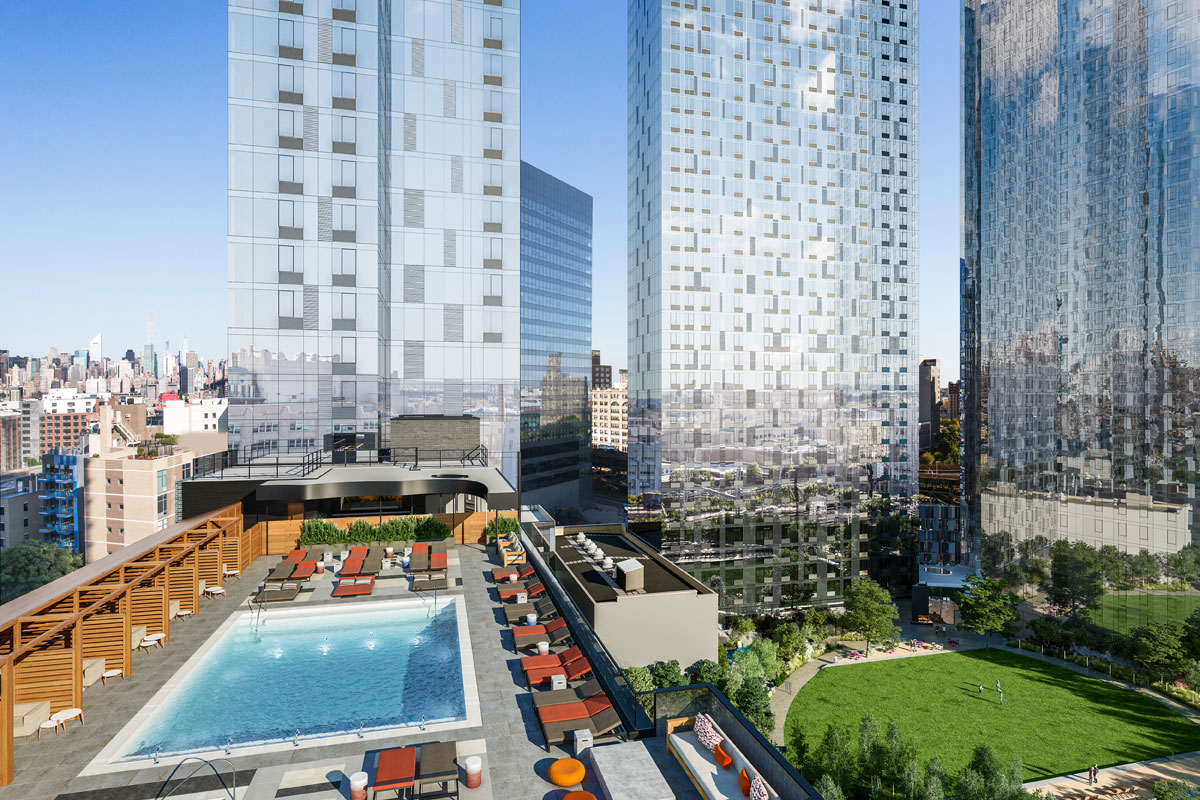
Tishman Speyer, one of the world’s leading developers, owners, operators and asset managers of first-class real estate, has announced an innovative collaboration with Amazon in which the first residents of all 1,871 apartments at Jackson Park, its trio of high-rise luxury rental towers in Long Island City, will receive an Amazon Echo Show complimentary upon move-in.
In addition to receiving a new Echo Show, all Jackson Park residents will also receive a complimentary smart outlet that can link to the Amazon Show device to highlight some of the endless possibilities associated with smart home and voice-activated technology. Tishman Speyer will also equip each of its 120 premium penthouse residences with a full suite of smart home devices certified to work with Amazon Alexa, including electrical outlets, light switches, and thermostats, enabling new residents to control their home simply by asking Alexa.
“With Jackson Park, Tishman Speyer is setting new standards for Long Island City luxury living and amenities,” said Rob Speyer, president and CEO of Tishman Speyer. “We are thrilled to be working with Amazon, the undisputed leader in advanced smart home technology. We are striving for the best possible experience for our residents and this collaboration completes the amenity package at Jackson Park.”
“From making a living space more comfortable to offering entertainment and information, Alexa and Echo devices can improve the experiences we have in our homes,” said Charlie Kindel, the director of Amazon Smart Home. “Smart home control is one of the most popular Alexa features today, and we think Long Island City residents will love using their voice to make life at home easier.”
The Amazon Echo Show features a 7-inch touchscreen and 5-megapixel camera and is powered by Alexa, the cloud-based voice service that can help residents with tasks, entertainment, general information and more. The Echo Show will offer residents voice responses from Alexa that are now enhanced with visuals and optimized for visibility across the room. Residents can call or message their family and friends, get the news with a video flash briefing, see their Prime Photos, shop with their voice, see lyrics with Amazon Music and more.
Once connected to smart devices in the home, Echo Show will also allow residents to control their lights, television, and thermostat from anywhere in the home by linking with any smart home products in the Works with Amazon Alexa program, other Amazon Echo devices and more. Speakers can be grouped as well, creating a multi-room entertainment system seamlessly controlled by voice.
The concept to develop smart-home enabled apartments originated out of Tishman Speyer’s global internal innovation competition known as the Idea Olympics. Launched in 2016, the Idea Olympics challenged junior executives at Tishman Speyer to form teams and develop a concept for an original residential amenity that would revolutionize the way people live. Teams competed through two rounds of competition and the winner of 2016’s competition developed the concept to offer apartments equipped with smart home technology, to be implemented in Jackson Park. Tishman Speyer has taken that idea from this internal competition to market in just one year.
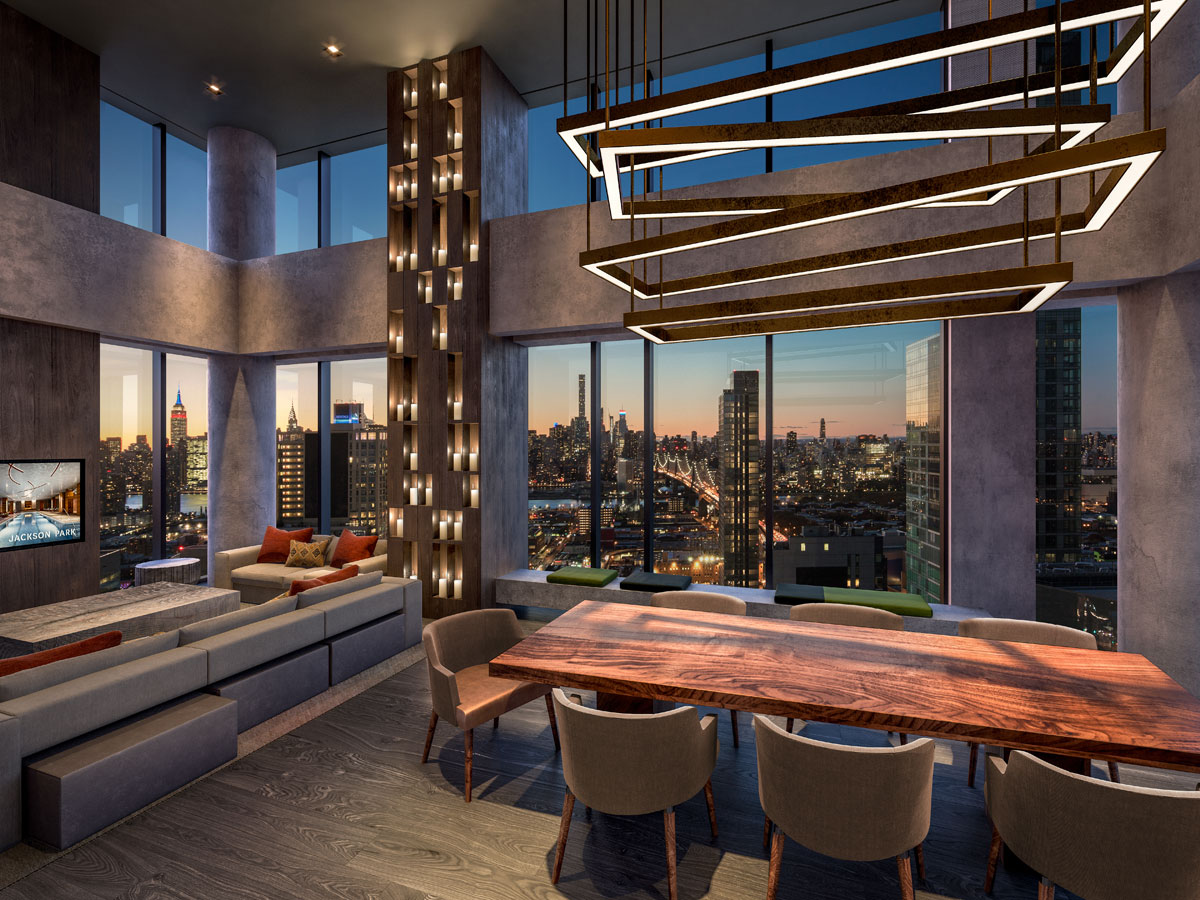
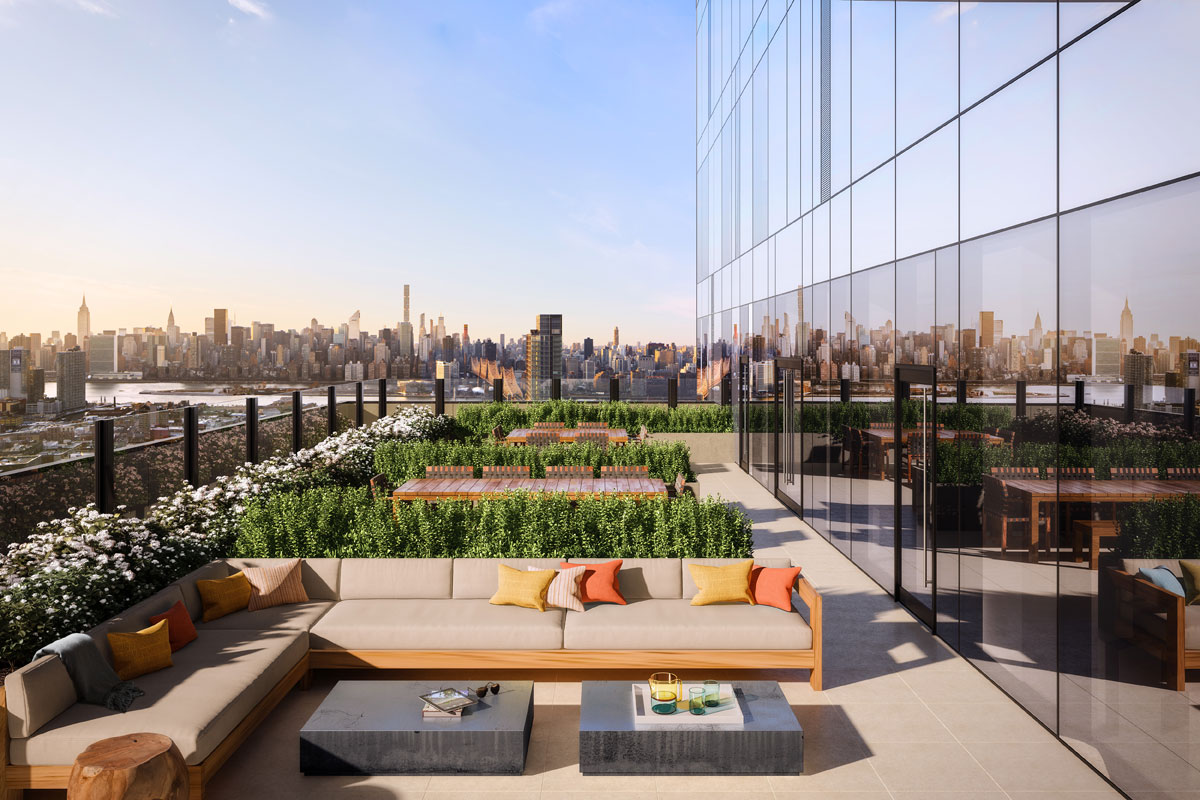
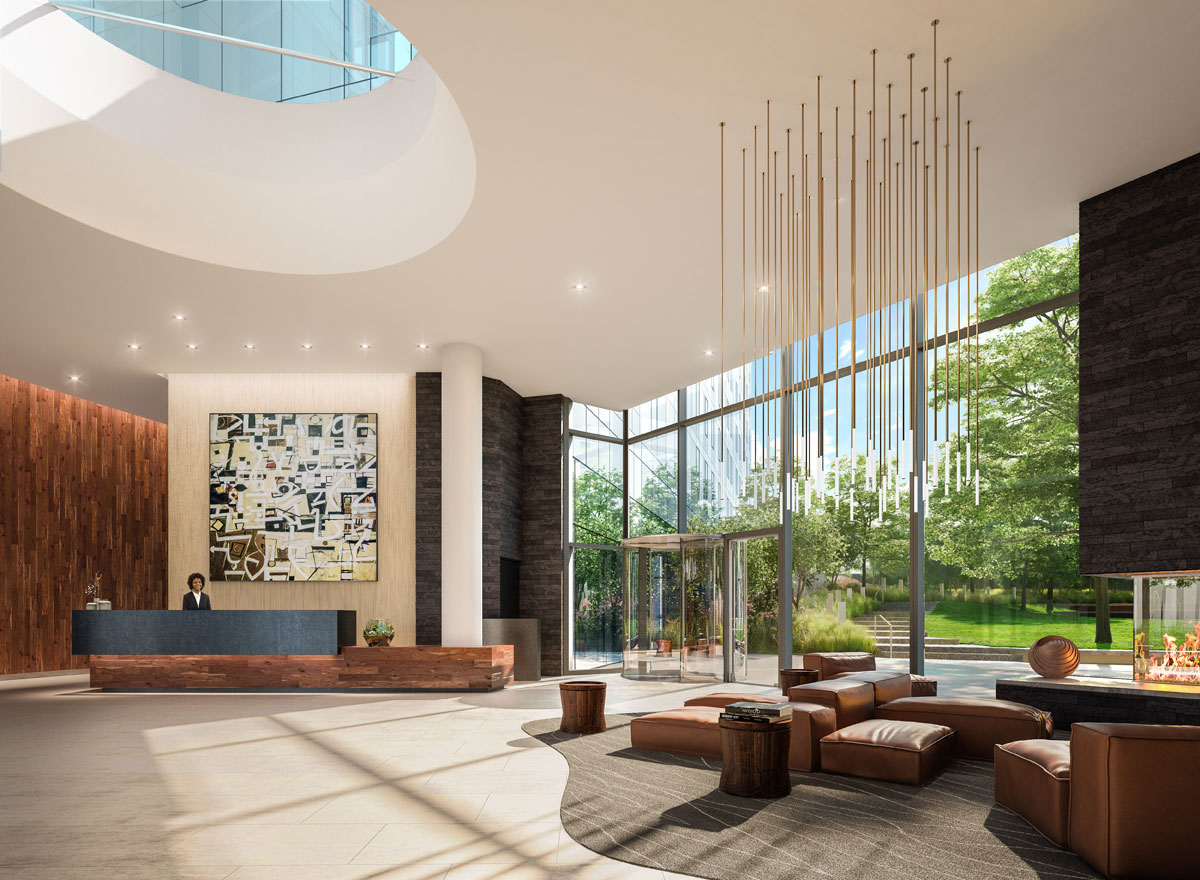
Jackson Park renderings
courtesy of Tishman Speyer.
For those who require short-term accommodation while moving or renovating their home, this hotel residence is the perfect home away from home.
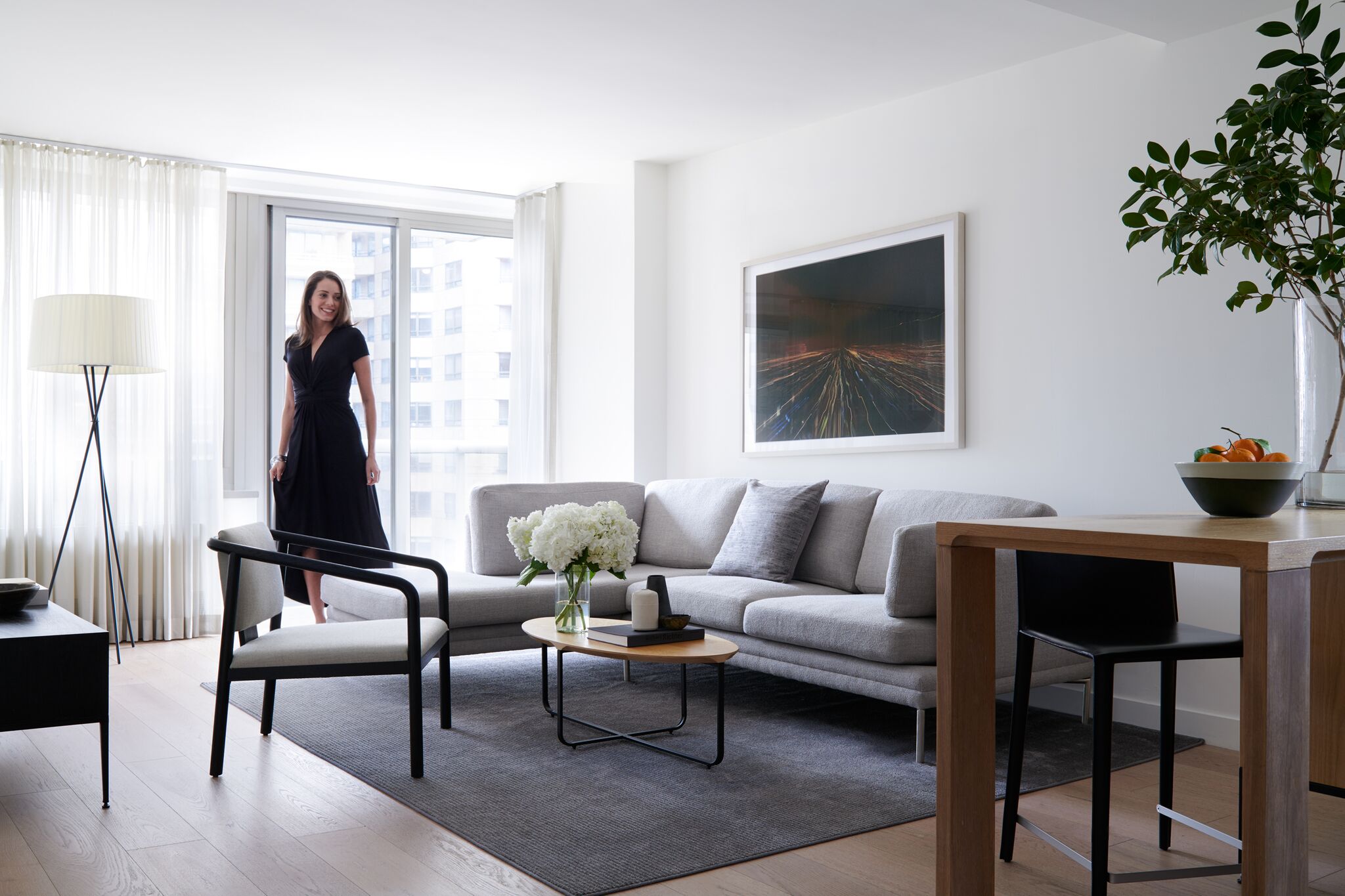
Buying or creating your dream home may require you to live like a nomad, as it may take weeks or months for a renovation to be complete, or there may be an unexpected gap between the sale of your home and when you are able move into your new home. Most standard leases are 12 months long, and finding a temporary accommodation can be a challenge. AKA United Nations was designed to be the ideal home away from home during this “in-between” phase.
AKA United Nations caters to the traveler or the NYC-local staying for weeks or months at a time by balancing the style and hospitality of an intimate hotel with the space and comfort of a fully appointed luxury condominium. It offers one-bedroom and premium furnished suites featuring exceptional business, wellness and lifestyle amenities.
Luxury residential-style suites include private balconies with spectacular skyline and East River views, European-style full, open kitchens and custom made cabinets, luxurious bathrooms with Carrara marble and glass showers. Other amenities include curated grocery lists from Fresh Direct delivered in-suite upon arrival, a 24-hour fitness center, and a serene outdoor landscaped terrace and tranquility garden.
To shine some light on what’s ahead for homes, we take a look at 10 ideas, products and attitudes that promise to impact homes as we head toward the end of the decade.
By Camilla McLaughlin
What’s driving innovations for homes is a synchronicity between evolving consumer attitudes, new products and emerging technologies. Today, consumers play an important role in this process. Rarely are consumers cited as change agents, but consumers themselves have changed.
Instead of being recipients of what the market offers, they have become savvy, active participants in the process. When it comes to homes of the future, nothing matters more than the consumer.
Photo courtesy Chris Mayer Photography and Bassenian Lagoni Architects
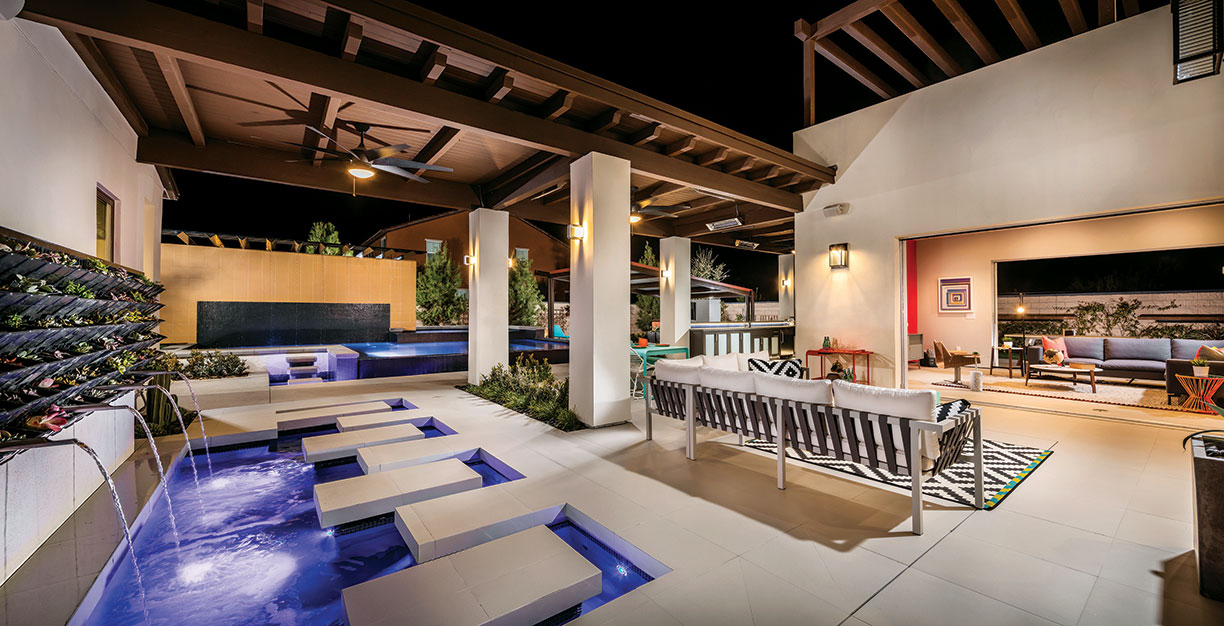
Millennials Are Change Agents
Expect to see millennials become luxury players. Right now, their impact on high-end markets is minimal, but this demographic is already a force shaping future home designs, particularly regarding energy efficiency and sustainability. “This is the homebuyer of the future and builders should be constructing homes to meet their desires,” says Lee Ann Head, vice president of research for the Shelton Group. “According to our Energy Pulse studies, millennials want more energy-efficient homes and the technology to easily monitor and control their energy consumption. Millennials are also more discerning about certifications and prefer certified energy-efficient homes.” Also, they are “very aspirational about solar energy and are adopting solar panels at a much higher rate than the overall population.”
Approximately 35 percent of U.S. homebuyers are millennials, and 67 percent of them are first-time buyers. But having delayed a first-home purchase, many millennials do not fit into the typical first-time-buyer profile. “It’s important to note that the first-time homebuyer is not what it used to be. Many of these folks are better established in their careers and many are more upscale. Therefore, many of them are in the market for their ‘dream home’ not their ‘starter home.’ Therefore, the list of features I’ve noted, which could drive a home price up, is not necessarily out of the question for these buyers,” explains Head. And, she adds, the greener homebuyer tends to be a better-educated, somewhat more upscale buyer.
Still Debating Whether Size Matters
If there was any given in the world of upscale real estate, it was bigger is better. Today, any consideration of home sizes opens the door to an entirely new dialogue based on diverse and changing consumer attitudes. For trophy homes, there is still nothing modest about square footage; uber properties are getting larger with increasingly lavish amenities. But designers, Realtors and architects also say clients want smaller homes and plans that engage every square foot. “People want to use their whole house. Fewer and fewer people are willing to have spaces just for formal occasions,” shares Elyssa Morgante with Morgante Wilson Architects in Evanston, Illinois.
Even the tiny house trend has found a luxury expression with what Florida developer Frank McKinney is calling a Micro Mansion. With just under 3,000 square feet under roof, McKinney’s tiny home is hardly micro, but it is still smaller than some luxury master suites. The inspiration he says came from Miami condos and also clients desiring a single-family residence in South Florida, but not another large estate they might only use a few weeks a year. Still, they expect a level of quality and finishes worthy of a mansion. McKinney has not compromised on finishes, design or drama in this ultra-luxurious home that includes unique features such as counters made of sea glass.
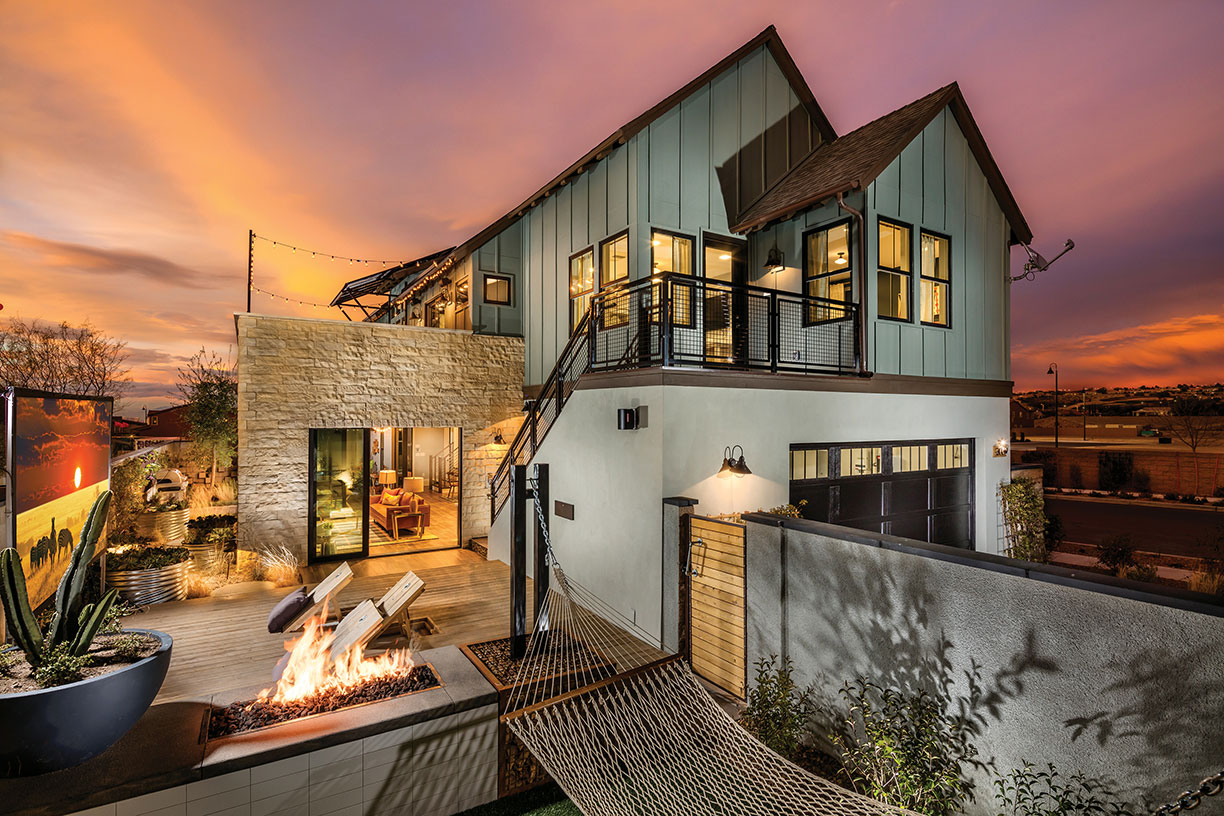
Photo courtesy Chris Mayer Photography and Bassenian Lagoni Architects
Functionality & Finishes
“It’s more about really functional spaces and higher-quality finishes,” says Chicago designer Donna Mondi. “Some people don’t want a living room. Instead, they’d rather have the space be a home office or a really beautiful study or library. A lot of it is more the function of the space than less space,” she explains. Like many designers, Mondi says consumers are becoming more discerning. “There is an appreciation for how a great faucet feels in their hands or a great doorknob feels versus a cheap one.”
Getting Smarter
Interactive design has completely altered the way we engage with our homes. “It has been a real cultural change that’s permeated through all product design. People are more demanding and more aware of the ease of use of interactive design because of their experience with smart phones,” says Marc Hottenroth, director of Industrial Design at GE Appliances. “We are starting to see the trend moving from tap and select on the phone to gestures and voice and then having a conversation with the product via a digital assistant.”
The addition of artificial intelligence takes interactivity to a new level. Already, it is boosting the IQ of smart homes by enabling protocols such as geofencing in which a predetermined series of actions (security disabled, lights turning on, music playing) are triggered when an owner (and their smart phone or watch) reaches a preset distance from home. Looking ahead, Hottenroth speculates on scenarios in which we might purchase say a rack of ribs at a grocery store and artificial intelligence would call up recipes and transmit them to a kitchen appliance. “There are all sorts of interactions that could take place that we never even thought about,” he says.
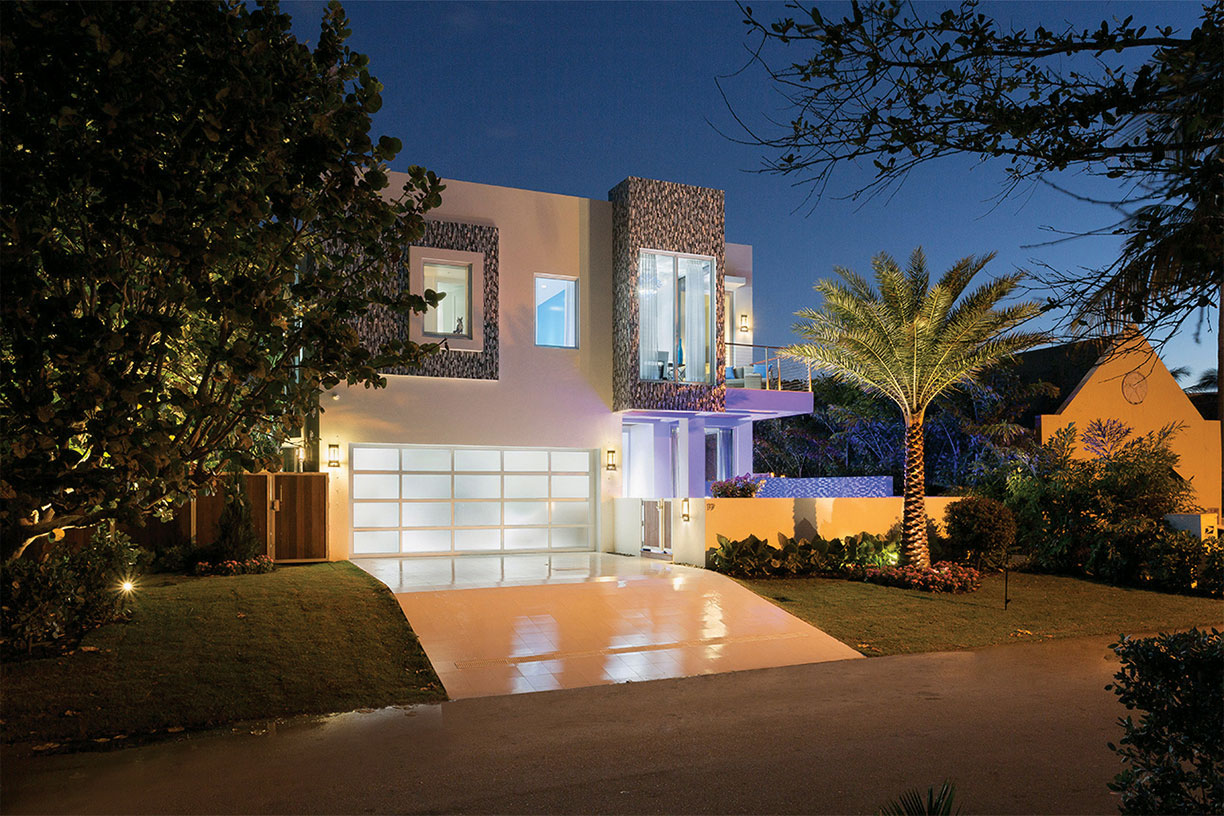
Photos courtesy Ed Butera, IBI Designs and Frank Mckinney
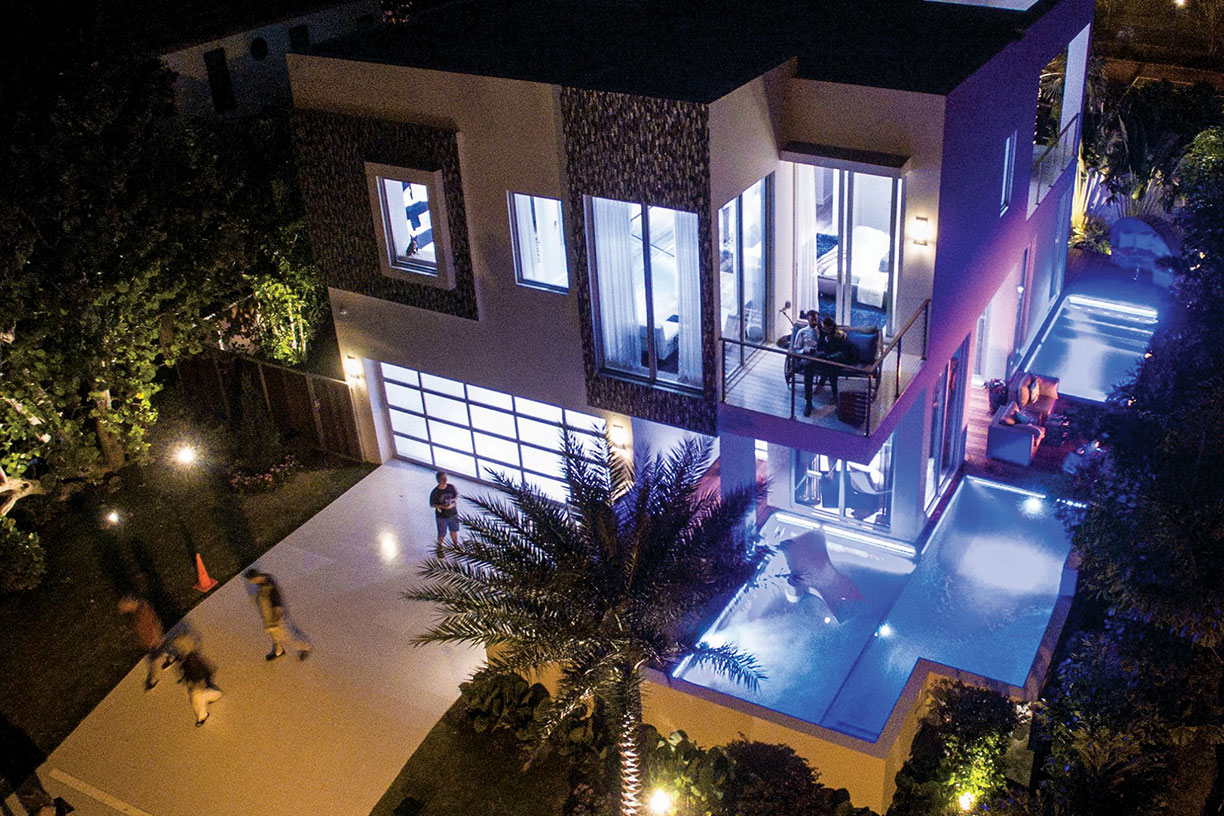
Can You Hear Me Now?
“We are moving toward rich interaction and the next wave is having no interface,” Hottenroth explains. Instead of using manual or digital controls to operate an oven, washer or other appliance, we will simply talk to them. Currently, GE has a digital assistant, Geneva, which meshes with Alexa or Google Home and enables consumers to control a number of appliances using voice commands. They can add minutes to a wash cycle, extend time in the oven or turn on the dishwasher from their bedside. They can ask if their laundry is clean or how much time is left on a cycle. Or Geneva — with a little help from her digital friends — can keep clothes tumbling in the drier a little longer. Unfortunately, folding clothes is not an option. Yet.
Wellness
Wellness as a concept for homes has been around for a few years, and most of the emphasis has been on construction materials and air quality. Now consumers and builders are turning attention to other aspects of wellness and materials that compromise air quality. The WELL certification for homes has been available for a few years, and new nonprofit advocacy groups such as Wellness Within Your Walls and the Sustainable Furnishings Council bring attention to furnishings and other products brought into the home. Expect to see more certifications for homes such as Indoor airPLUS.
More Than Cooking
Steam ovens, introduced a few years ago, tapped into new consumer preferences for healthier food prep. Following that trend, several new products take wellness and kitchens in a new direction, which expands on the idea that a kitchen can be a place to grow as well as prepare food, a concept often spied in one version or another of kitchens of the future. “Maybe it’s just California being healthy eaters, I say we’ve definitely seen steam ovens as well as composting as a trend. We integrate a lot of composting. Not only do you have your garbage and your recycling, but you also have your compost. That’s involved in every kitchen now,” says San Francisco designer Kriste Michelini.
At this year’s Consumer Electronics Show, a new appliance from WLabs of Whirlpool Corporation, the Zera Food Recycler, took home awards in several categories including Eco-Design and Sustainable Technologies. Using an automated process, Zera can break down a week’s worth of food waste from the average family into ready-to-use homemade fertilizer in 24 hours. All it takes is a push of the button or the Whirlpool mobile app.
The Urban Cultivator, a residential version of a commercial product, brings the ability to grow herbs and greens into the kitchen. The product can be free standing or installed to blend with existing cabinetry and looks very much like an undercounted wine refrigerator. It includes automatic air circulation, watering and custom formulated organic plant food. Growing potential include greens such as kale and arugula as well as herbs.
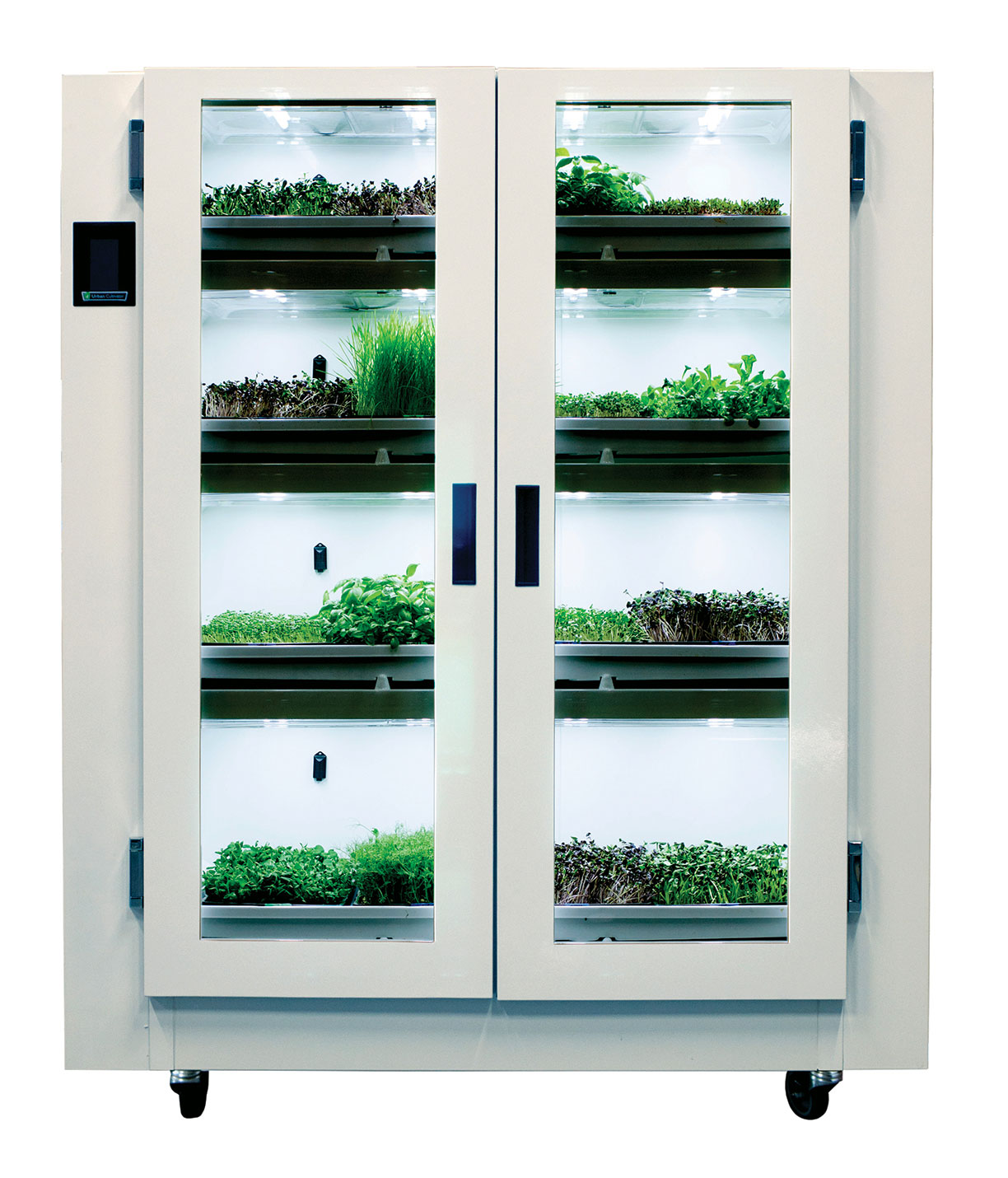
The Urban Cultivator
Photos courtesy the urban cultivator
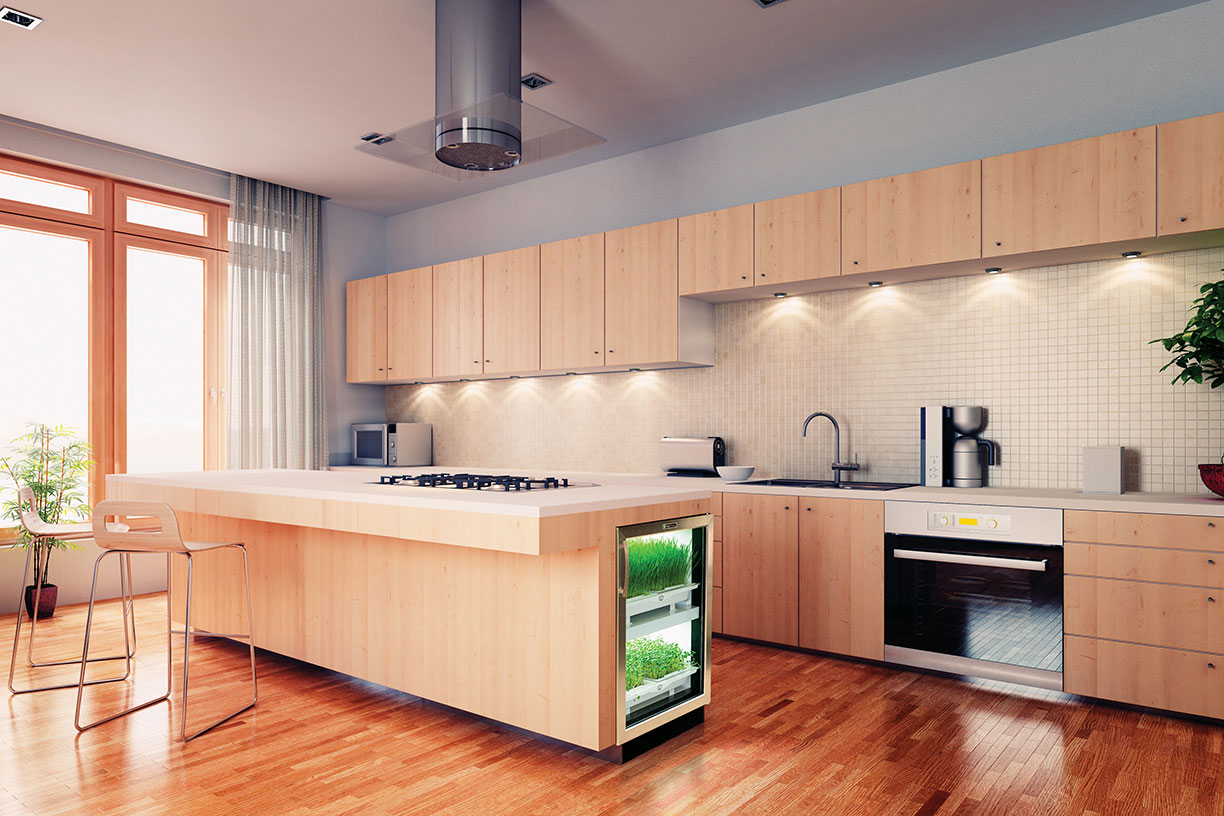
Flexibility & The Sharing Economy
Today, homeowners typically stay in their homes for an average of 8 to 10 years, so it’s no surprise flexibility has emerged as a desired attribute for homes. While most attention is focused on rooms that can be adapted in multiple ways, architects are focused on ways homes overall can adapt to the changing needs of homeowners. For the 2016 International Builders’ Show, Newport Beach architects Bassenian Lagoni (BL) designed two homes geared toward changing lifestyles. “We wanted a home that can morph and flex over time,” says architect Hans Anderle, who was on the BL design team. In both models, the entry-level Contemporary Farmhouse or move-up Contemporary Traditional, fluid floor plans enable rooms to be used in a number of ways and are enhanced with seamless indoor/outdoor connections on multiple sides of the homes. Additionally, both homes incorporate spaces giving families options to adapt the home to their own lifestyle. A first-floor suite with a mini-kitchen is suited for adult children, grandparents or visiting family. But an outside entry also makes it ideal for Airbnb guests or for a home office. Both homes include another separate space for rentals or guests or a home office. Not only do these designs accommodate changing spatial needs of a family, but the intent was also to include ways for entry-level owners to afford the home initially and then adapt it as their lifestyle changed.
Changing Architecture
Architecture is not static. Instead it’s always evolving. Right now, contemporary holds sway, but still it’s rooted in regional vernaculars, which syncs with the growing consumer desire for authenticity. Look for more transitional styles in new homes as well as existing homes as more owners opt to renovate rather than move. Even hard-edge contemporary styles are softening in some regions.
Traffic
Traffic and gridlock aren’t often mentioned as change agents, particularly for homes. However, in some cities, both — along with access to alternate transportation — play a role in home values, pumping up prices and demand. Self-driving cars are often cited as a potential solution, but even urban planners don’t have a solid take on the impact on cities, let alone housing. Some believe autonomous transportation will create more demand for suburban locations.
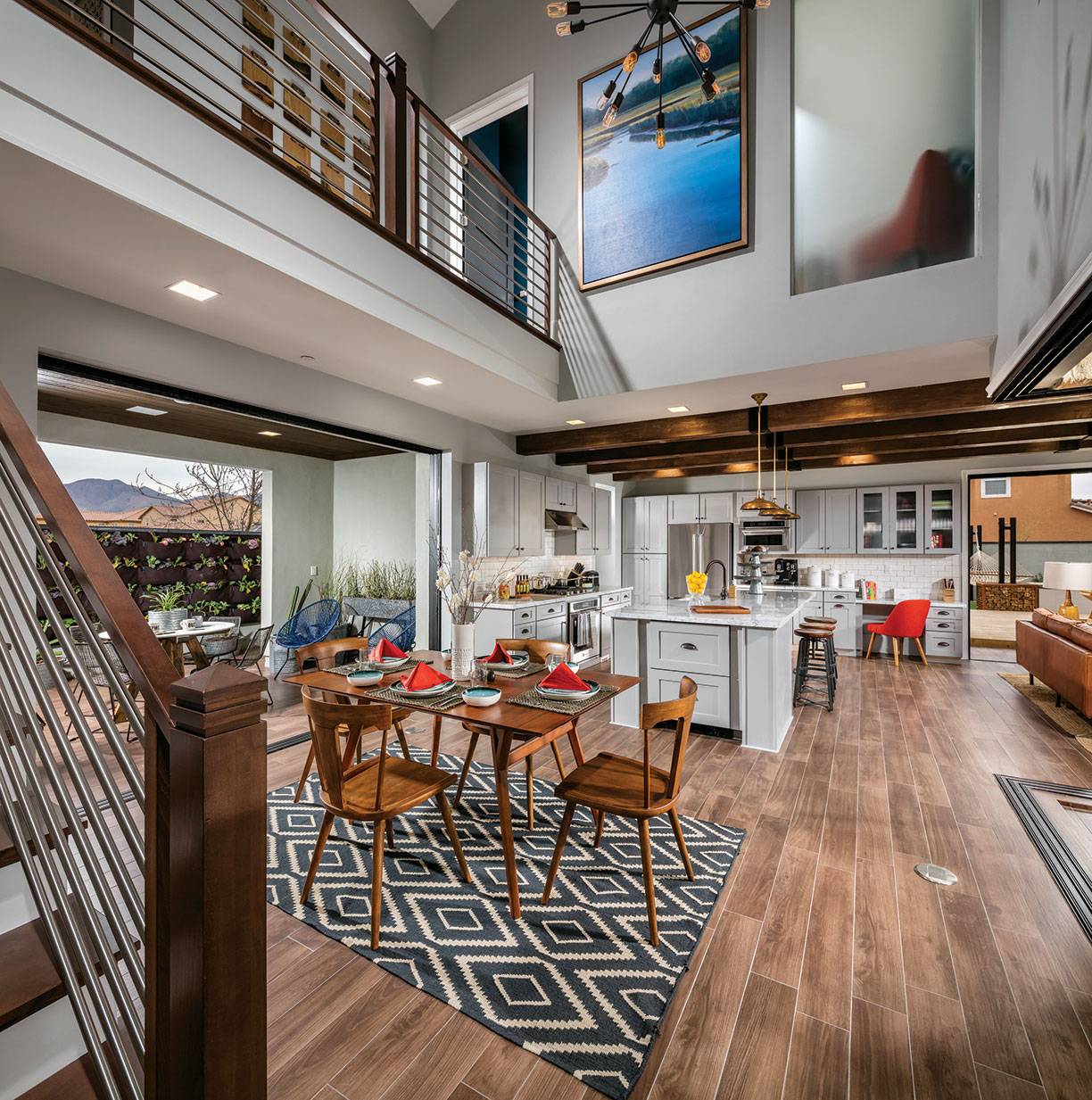
The recipe for a home of the future: indoor/outdoor merger, authentic materials, and dramatic design.
Photo courtesy Chris Mayer Photography and Bassenian Lagoni Architects
To gain maximum exercise benefits from their home pool and spa complexes, homeowners are seeking out powerful swim training systems.
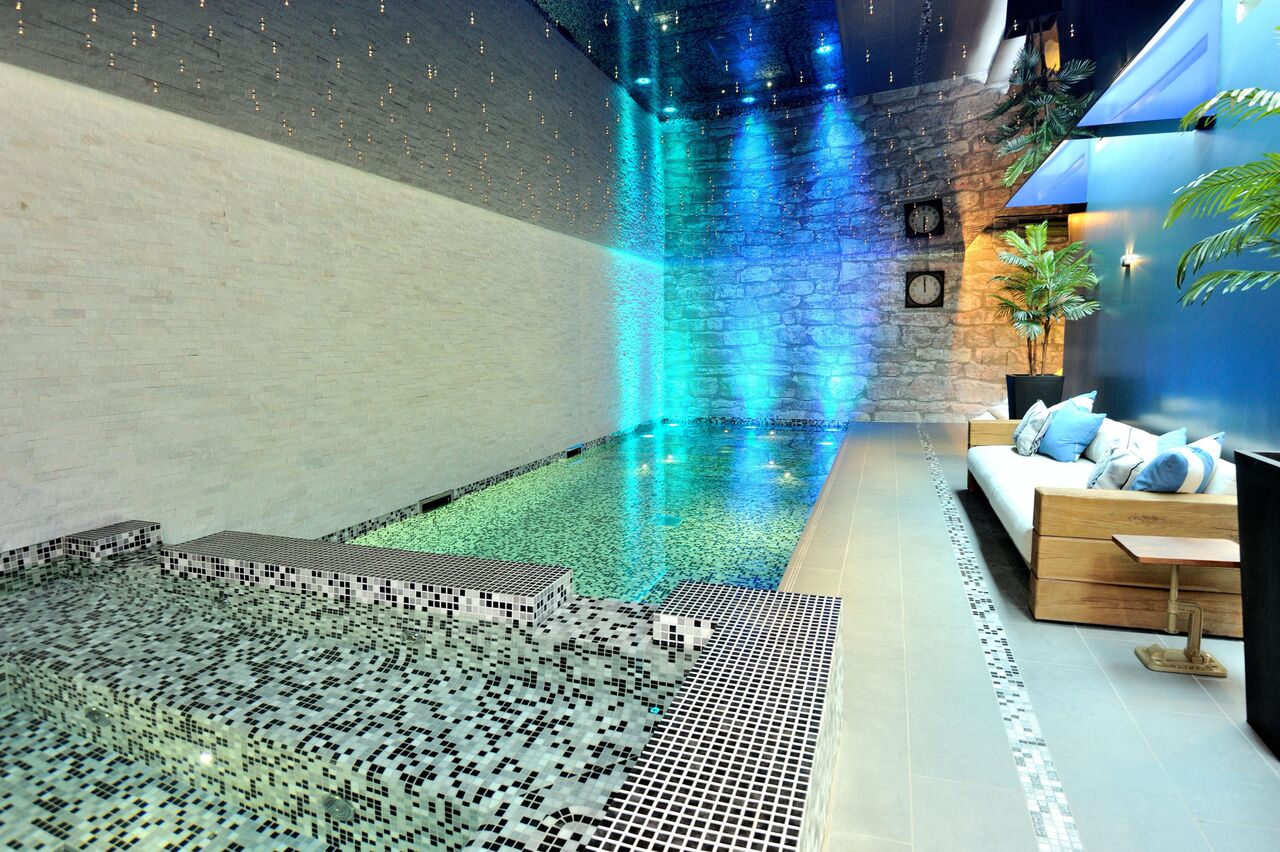
Luxury swimming pool design and build company Aqua Platinum has began to research this trend’s growth.
“There’s been a huge increase in demand for counter current swimming technology in the past few months, as more and more people come to recognise the health benefits of these systems,” says Dominic Searle, the business development manager at Aqua Platinum.
Ideal for swimmers who want to build up their core strength and endurance, swimming training systems create powerful currents within pools, plus they can be installed in pools of almost any size.
By swimming against the current, individuals can benefit from an enhanced workout that is incredibly low-impact on the joints. Counter current swimming also speeds up the metabolism and elongates the muscles.
Celebrities including Natalie Portman, Julia Roberts and Jennifer Aniston swear by swimming when it comes to keeping their A-list bodies in shape.
“It’s not just celebrities who can achieving amazing muscle tone and overall fitness levels as a result of swimming,” says Searle. “Counter current systems mean that anyone can instantly improve the health benefits of their swimming pool, turning what is already a great form of exercise into something even more effective and enjoyable.”
Most of those with high-end pools tend to opt for swim training systems like the JetStream TriVa, which looks beautifully sleek and stylish. The system suits a wide range of swimming abilities and levels, from beginner to professional level training.

At Newlands Manor in Dorset, the counter current training system is suitable for athletic level swim training.

The JetStream TriVa appeals to a range of swimming abilities.
Photos courtesy of Aqua Platinum Designs and TriVa
While farm-to-table produce was once a hot trend, community residents have now begun to expect farm fresh ingredients on their plates and in their cocktails.
By Alyssa Gautieri

To keep residents and guests happy, residences and resorts have embraced the farm-to-table movement, but they have also begun to take the culinary experience a step further. These residences have expanded their on-site offerings to include organic farms, educational programs and more. These innovative ideas are bringing the authentic flavor of the land to restaurants, bars and homes.
Kukui’ula
This property offers an Upcountry Farm, a 50-acre community farm equipped with a staff of farmers who help residents and guests harvest seasonal fruits and vegetables. In addition to gardening lessons from farmers, residents can tend the soil, pick from fields of fruits and vegetables, taste seasonal produce or cultivate an appreciation for sowing, growing and harvesting. The community also offers a gourmet farmers’ market on Wednesdays and monthly farm-to-table dinners prepared by Chef Ben Takahashi.
Photos courtesy of KuKui’ula
The Cliffs Broken Oak Organic Farm
This community founded Broken Oak Organic Farm, a 5-acre farm complete with greenhouses and fields for year-round growing. The farm also uses organic growing practices. The Farm hosts a monthly farm stand, as well as “People to Farm” dinners, wine tastings and educational classes.
Photos courtesy of The Cliffs
Costa Palmas
This new development, which is set to open on the East Cape of Cabo in 2018, will feature the first Four Seasons in the area and will have 18 acres of orchards and farms. In addition to providing an amenity to residents, the organic farms will produce food for the hotel and create an opportunity for the inhabitants of La Ribera. Fresh tomatoes, bananas, papaya and chili peppers will appear in cocktails and meals, and the best avocados and limes in the world will compliment tasty dishes.
Photos courtesy of Costa Palmas


Higher ceiling heights – now common in all units, not just penthouses – give residents the luxury of natural light with floor-to-ceiling windows, breathtaking views comparable to those available higher floors and the ability to decorate their spaces with stately fixtures.
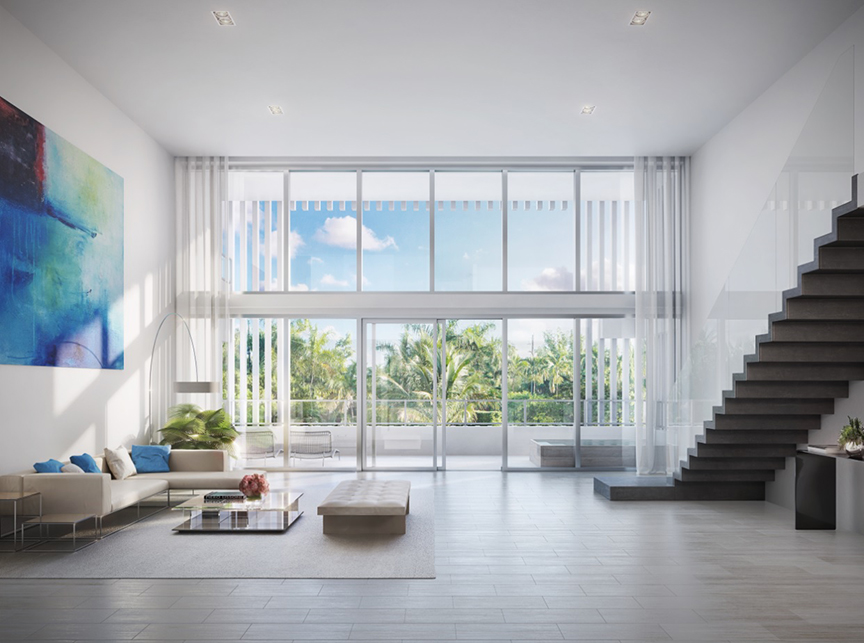
The Ritz-Carlton Residences, Miami Beach, feature 111 condominium residences with a selection of loft-style units that boast remarkably high ceilings reaching a maximum height of 16-feet. Floor-to-ceiling windows allow in ample natural light a provide vast views from Piero Lissoni’s first full-scale architectural project in the U.S.
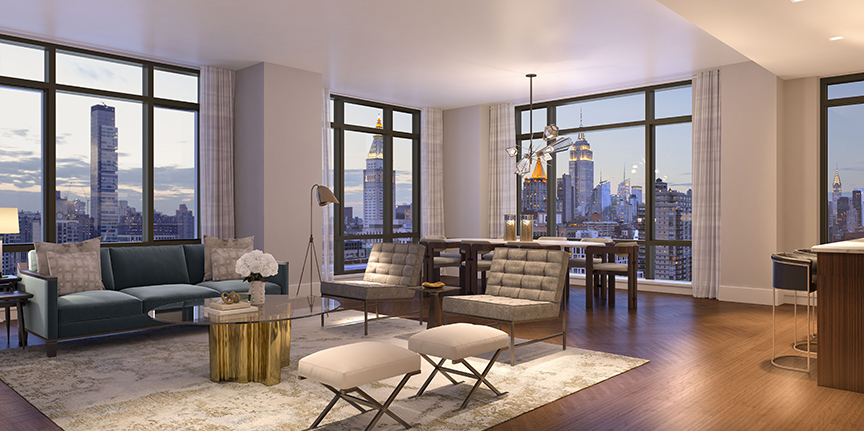
The Tower at Gramercy Square features a number of luxury residences, besides the penthouse, with exceptionally high ceilings. Select residences that range from studios to three-bedroom homes feature 11 to 14 foot ceiling heights and are found on multiple floors throughout the 17-story building. Gramercy Square is a four-building condominium being developed by Clipper Equity and the Chetrit Group in the Gramercy Park neighborhood of Manhattan.
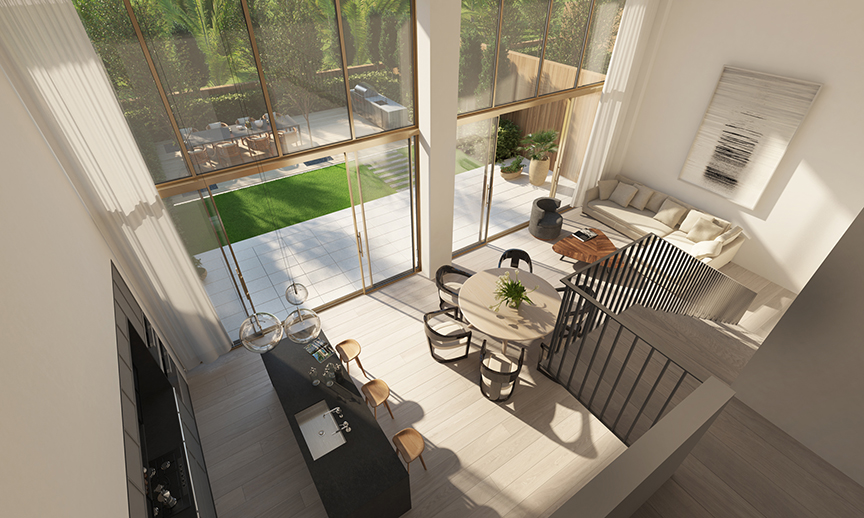
Three Hundred Collins, features a limited collection of townhouses featuring expansive open layouts and massive 18’6”ceilings. The 19-unit boutique property is nestled within the stylish community of Miami Beach’s exclusive residential South of Fifth neighborhood and conceived by New York City’s “designer for the one percent” Thomas Juul-Hansen.
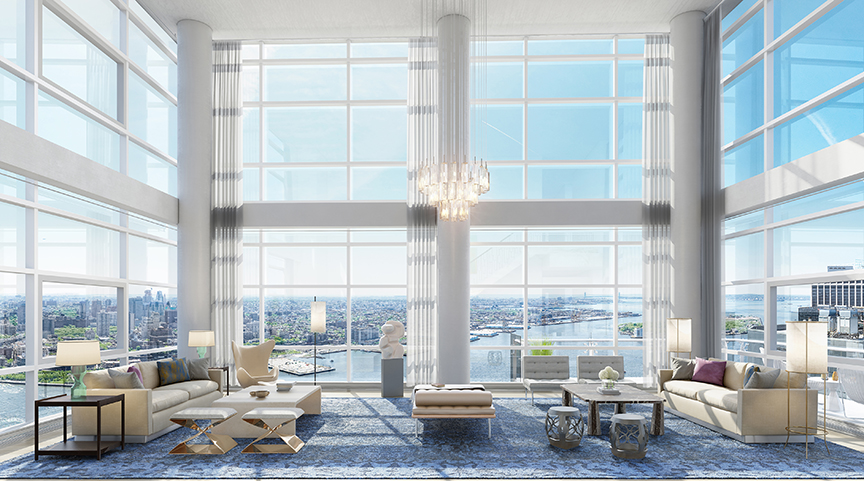
Ceilings take on new heights at Hill West Architects design, 1 Seaport. New York City’s soon-to-be first all glass residential tower welcome residents home with 11 ft. ceilings and floor-to-ceiling windows that provide mesmerizing views of the water and seaport.
L’Atelier Residences, internationally acclaimed furniture designer Holly Hunt’s first-ever residential development, is a 24-residence boutique oceanfront luxury high-rise in Miami Beach with select residences featuring 11-foot ceiling heights. The residences on various floors offer high ceilings that are met with floor-to-ceiling windows to provide gorgeous, panoramic ocean views.
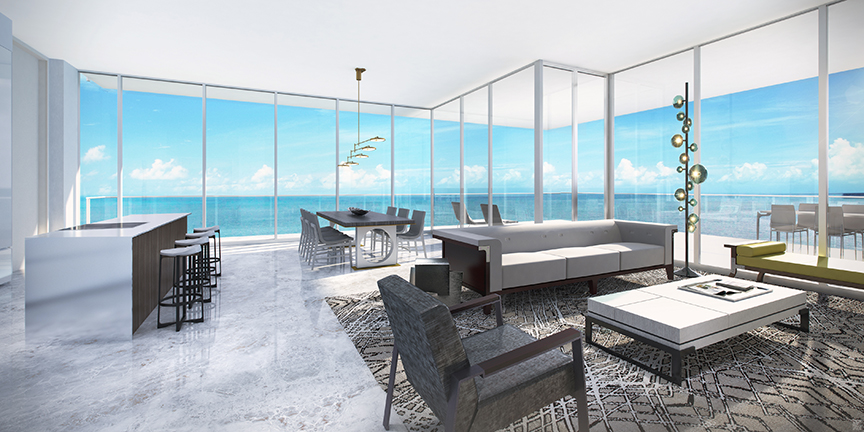
Photos courtesy of:
The Ritz-Carlton Residences – The Ritz-Carlton Residences, Miami Beach
Three Hundred Collins – Bloomimages
Gramercy Square – Familiar Control
One Seaport – Hill West Architects
L’Atelier – L’Atelier Residences Miami Beach

A major trend in today’s high-end wristwatch market is the exhibition of all moving parts, viewed through flawless sapphire.
Although subject to market fluctuations, there remains strong demand for luxury timepieces, particularly among the same clientele vying for vintage sports cars, cases of old Bordeaux and Midtown Manhattan real estate. Some of the hottest new watches, with stratospheric prices to match, reveal intricate operating movements through transparent sapphire cases.
Sapphire crystals — this is synthetic sapphire created in a laboratory, but nonetheless a precious material — are no longer exotic, and show up in many mid-priced timepieces and Apple devices. Far more unusual, however, is when entire cases are made from the material, allowing views inside from every angle. “People are paying for craftsmanship and they want to visually see that craftsmanship,” says Ariel Adams, founder and editor-in-chief of A Blog to Watch and one of America’s leading experts on luxury timepieces.
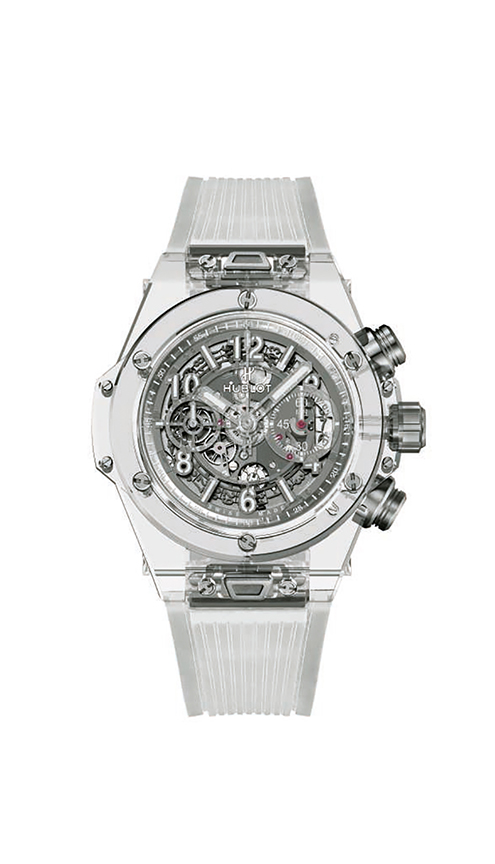
One limited edition watch that exemplifies the all-sapphire trend is the Greubel Forsey Double Tourbillon Technique Sapphire. It is a flashy blend of technology and glamour with the crystal, case back, case band (middle panel), and bezel, all crafted from sapphire, as well as the lugs (where the strap is attached) and crown. The brand is a favorite of Alexander Linz, a prominent watch industry authority and publisher of Watch-Insider.
Speaking to the consistent innovation of watchmakers Robert Greubel and Stephen Forsey, the Vienna-based Linz states, “It’s rare to see watches created with this kind of spirit, love and passion,” and adds, “Their hearts are really in these watches.” All of this invisibility accentuates the complex and aesthetically alluring mechanisms, with many of the flashy watch’s 393 pieces in full view. The price tag on this watch — a limited edition with only eight produced — is a staggering $1.1 million.
Hublot is a highly respected Swiss manufacturer founded in 1980 and now a subsidiary of luxury conglomerate LVMH, whose upmarket brands include Moët & Chandon, Marc Jacobs and Louis Vuitton. One of the company’s most exotic timepieces is the MP-05 LaFerrari Sapphire ($575,000), among the most audacious looking timepieces a gentlemen could ever strap on his wrist. The name reflects Hublot’s partnership with the Italian sports car manufacturer (the watch even carries the automaker’s famed prancing horse logo), and Linz reports it is actually modeled after the backside of a Ferrari supercar. The watch is so aerodynamic, it looks like it could take the pole position at Le Mans.
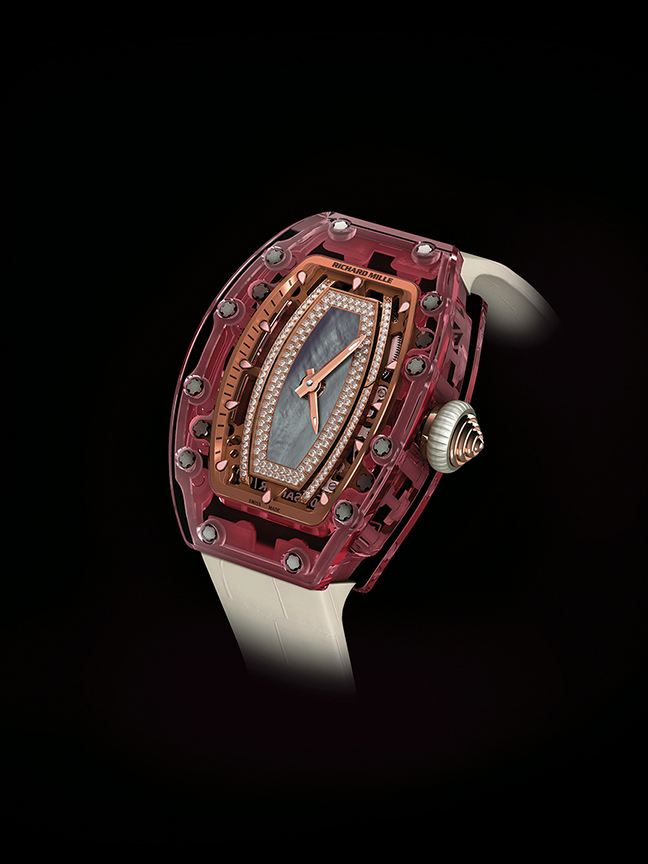
Since its founding just 17 years ago, watchmaker Richard Mille has become a cult favorite, and Linz reports that in Europe, his watches are particularly favored by Formula One racecar drivers. For women, the RM 07-02, nicknamed “Pink Lady Sapphire,” is one of the most stunning-looking watches to ever make its way to market. The case, bezel, case band, and case back are milled from solid blocks of pink sapphire, and the contrasting central dial is crafted from gray mother-of-pearl, bordered by sparkling diamonds that reappear on some of the unveiled red gold mechanisms. The ultimate cocktail watch, the Pink Lady is priced just shy of $1 million.
MB&F is a limited-production boutique brand for elite consumers seeking exclusivity as well as craftsmanship. Its futuristic-looking HM6 SV (that stands for “Sapphire Vision”) combines advanced engineering with one of the most avant-garde aesthetics in the industry. While the entire case is not sapphire, this watch showcases its complex, intricately crafted movement through a multi-bubbled crystal crafted from 11 distinct pieces of sapphire seamlessly fused together. “It’s insanely interesting, and the movement is as much a piece of art as the case,” says Adams. And at nearly $400,000, the watch is priced like real jewels.
Bell & Ross products tend to possess a simple masculinity, strongly influenced by aviation and military instruments. But the BR-X1 Sapphire Tourbillon is a stunning, sheer-cased timepiece cut from nine blocks of flawless sapphire. Unlike some skeletonized watches whose movements are embellished with vibrant colors, variances of white and grey on this watch create an ethereal appearance that commands almost $500,000.
Veteran retailer Greg Simonian, who dispenses extravagant products at Westime, his posh Rodeo Drive boutique, best articulates why luxury watches continue to capture consumers’ imaginations. “There are many devices to tell you the time, but a beautifully crafted luxury watch is part jewelry, part miniature machine, and, most importantly, a real statement about its owner,” he states.





















